The first half of 2025 has revealed a complex tapestry of international real estate markets, with distinct patterns emerging across key investment destinations. From Manhattan‘s unexpected strength to Miami‘s market recalibration and Italy‘s divergent regional performance, these shifts present both challenges and opportunities for sophisticated investors navigating an increasingly interconnected global landscape.
New York: The Lion’s Roar Continues
New York’s residential real estate market defied expectations in the first quarter, maintaining robust momentum despite broader economic uncertainties. The city’s luxury segment, particularly properties valued at $4 million and above, has demonstrated remarkable resilience with approximately 30 transactions per week, predominantly in the condominium sector.
The market’s strength stems from a fundamental shift in buyer preferences. With renovation costs soaring from $250-300 per square foot fifteen years ago to $700 per square foot today, move-in-ready properties command substantial premiums. This renovation cost inflation has created a pronounced market bifurcation: pristine, well-proportioned units sell at prices reminiscent of the previous decade’s peak, while properties requiring work face extended market times and significant price reductions.
Neighborhood dynamics continue to shape market performance dramatically. The Lower East Side’s transformation into a destination for young professionals has created demand for compact new condominiums that would find no market on the Upper West Side. Conversely, the spacious three-bedroom units that trade briskly in Tribeca and above 59th Street struggle to find buyers in the East Village. Notably, Harlem has experienced sales declines over the past two years, contrasting sharply with the Lower East Side’s gentrification story.
The rental market’s intensity continues to drive potential renters toward purchasing decisions. While competitive bidding on renovated sales properties occurs regularly, it hasn’t become standard practice. Rental units, however, disappear within 24-48 hours of listing, creating an environment where homeownership often becomes the more practical choice.
Miami: The Market Finds Its Temperature
South Florida’s real estate market is experiencing a notable recalibration after years of unprecedented growth. Properties now remain on the market for approximately 90 days, a significant increase from the 60-day average of recent years. This cooling reflects increased inventory levels and heightened competition among sellers.
Despite elevated mortgage rates hovering around 7% for 30-year fixed loans—up from 5% just years ago—the market dynamics may favor strategic buyers. The combination of higher rates and expanding inventory creates opportunities for purchasers willing to consider shorter-term financing strategies with future refinancing potential.
The Miami market exemplifies the broader challenges facing luxury coastal destinations. Local buyers who hesitated during the pandemic boom now face a complex decision matrix: while inventory has increased, prices remain elevated compared to pre-pandemic levels. The Federal Reserve’s interest rate policy adds another layer of uncertainty, as potential rate reductions could simultaneously improve affordability and reignite price appreciation.
Italy: A Tale of Two Markets
Italy’s real estate sector presents a compelling study in regional divergence. While the national market achieved an impressive 11.2% increase in transaction volumes during the first quarter, individual cities tell vastly different stories.
Milan: Steady Growth Amid Transformation
Milan recorded a solid 7.1% increase in transactions, with 5,503 operations completed during the quarter. The city’s market demonstrates sophisticated financing patterns, with 53.5% of transactions involving mortgage financing—well above the national average of 45.8%. The historic center remains exclusive, with only 352 residential sales at an average price of €9,930 per square meter, while the broader central area between the Spanish Walls and the Navigli circle saw nearly 1,400 transactions at €8,432 per square meter.
The data reveals Milan’s market stratification: while prime locations like Porta Nuova and CityLife command prices exceeding €10,000 per square meter, peripheral areas such as Missaglia-Gratosoglio maintain accessibility at €2,200 per square meter. This diversity creates opportunities across investment scales and risk profiles.
Florence: The Contrarian Market
Florence stands as the notable exception to Italy’s growth narrative, recording a 6.2% decline in residential transactions. This contrarian performance occurs against a backdrop of regional strength, with other Tuscan cities posting significant gains: Pistoia surged 37.1%, Livorno increased 25.2%, and Arezzo grew 17.0%.
The Florence decline appears driven by supply constraints rather than demand weakness. Limited inventory may be restricting transaction volumes despite active buyer interest. Additionally, the city’s property owners increasingly favor short-term tourist rentals over sales, reducing available inventory for traditional residential transactions.
The Columbus International Advantage
These diverse market conditions underscore the critical importance of sophisticated cross-border expertise in international real estate investment. Columbus International, under the leadership of founder and CEO Richard Tayar, provides the essential bridge between Italian and American investors navigating these complex markets.
With offices strategically positioned in New York, Miami, Milan, and Florence, Columbus International offers unparalleled insight into the nuanced dynamics driving each market. The firm’s presence in all four cities enables clients to capitalize on arbitrage opportunities, whether identifying undervalued assets in Florence’s temporarily constrained market, navigating New York’s neighborhood-specific dynamics, timing Miami’s market cycle, or accessing Milan’s diverse price points.
The current market environment rewards investors who understand local nuances while maintaining global perspectives. As renovation costs reshape New York’s luxury market, Miami’s inventory dynamics create new opportunities, and Italy’s regional variations offer diverse entry points, the expertise to navigate these complexities becomes increasingly valuable.
Looking Forward
The first quarter’s performance suggests that successful real estate investment in 2025 will require nuanced market understanding rather than broad-brush strategies. New York’s resilience, Miami’s recalibration, and Italy’s regional variations create a complex but opportunity-rich environment for sophisticated investors.
The key lies in recognizing that each market operates according to its own logic while remaining connected to broader global trends. Currency fluctuations, interest rate policies, and demographic shifts continue to influence cross-border investment flows, making local expertise combined with international perspective more valuable than ever.
For investors seeking to capitalize on these global real estate crosscurrents, the path forward requires partners who understand not just market mechanics, but the cultural, regulatory, and economic forces shaping opportunities across continents. The markets of 2025 demand nothing less than truly global expertise matched with hyperlocal insight.



